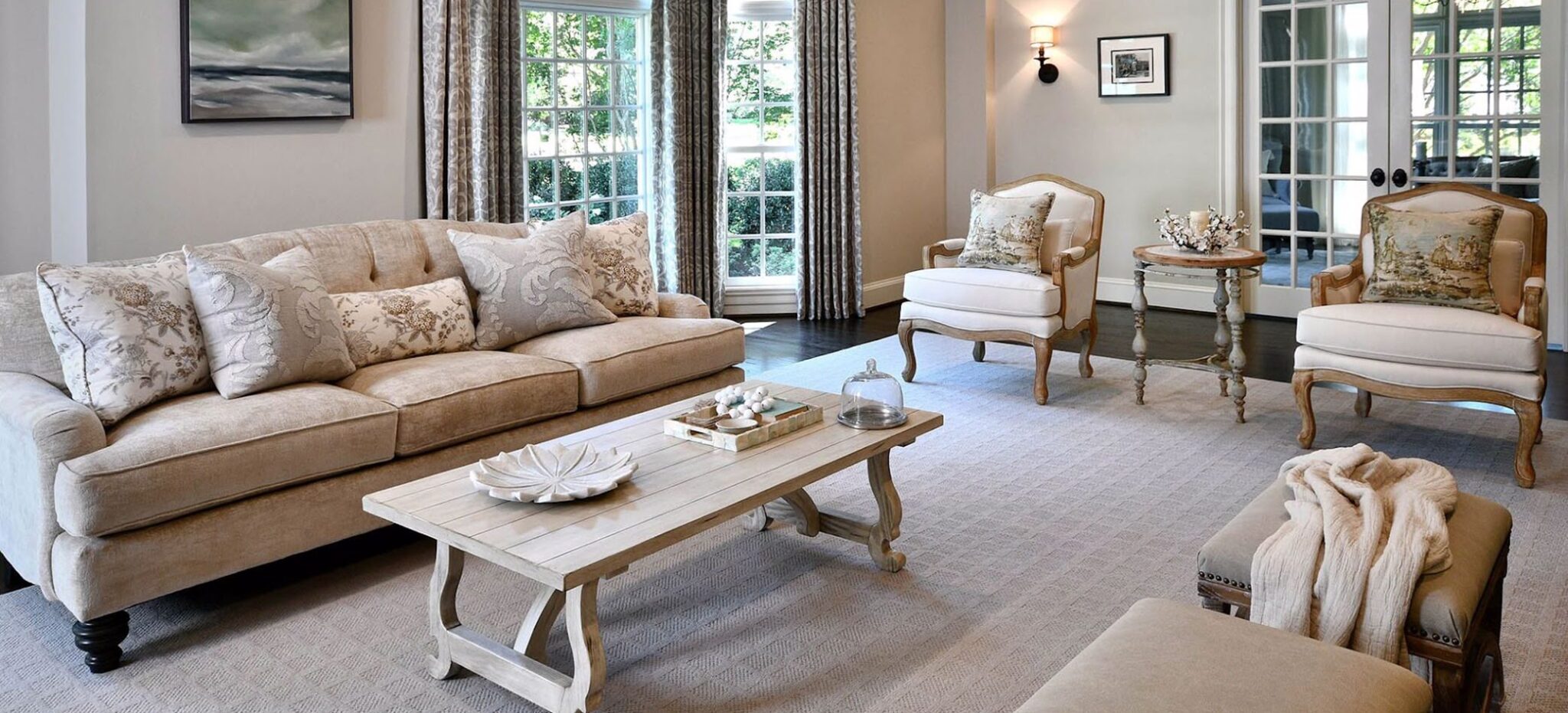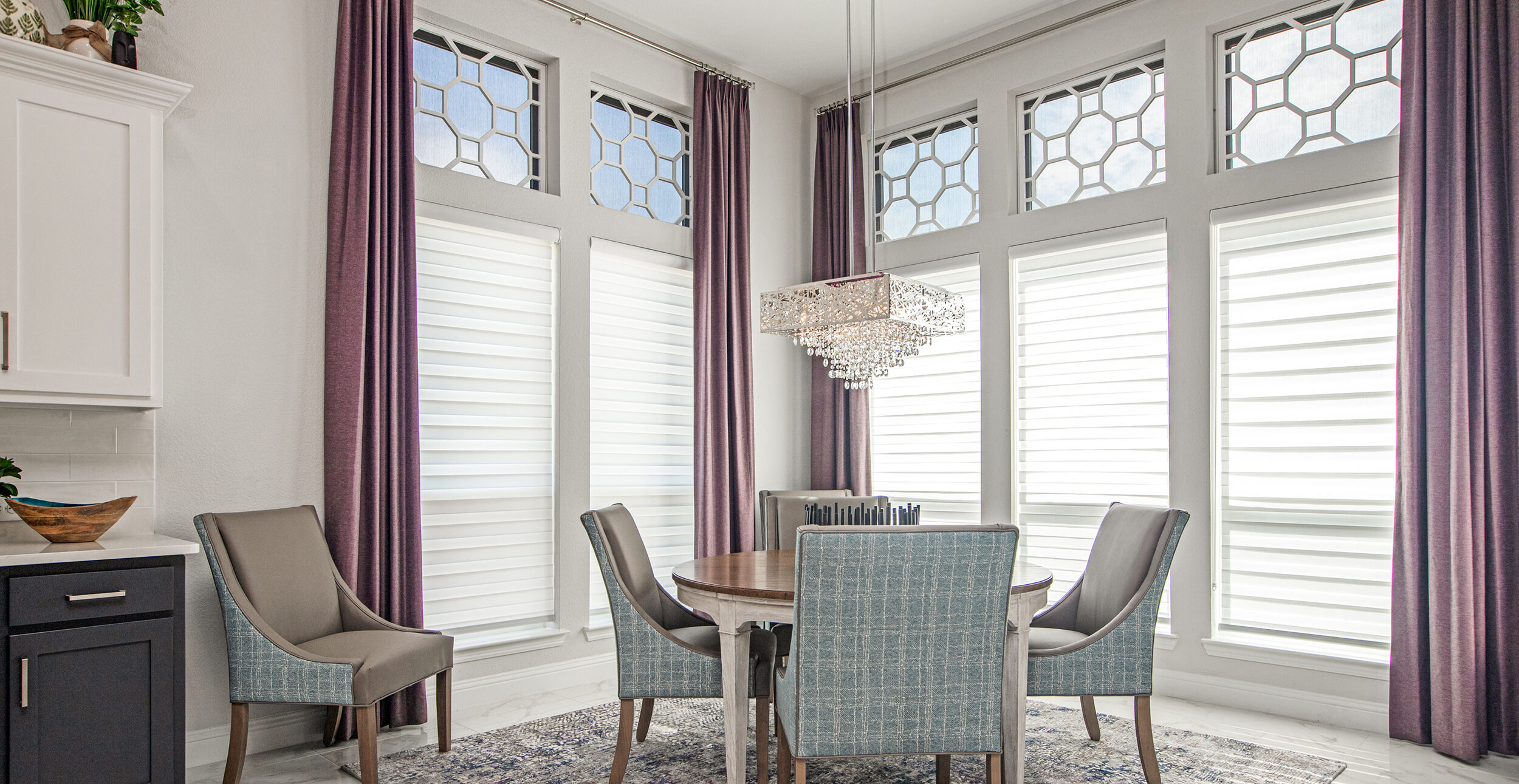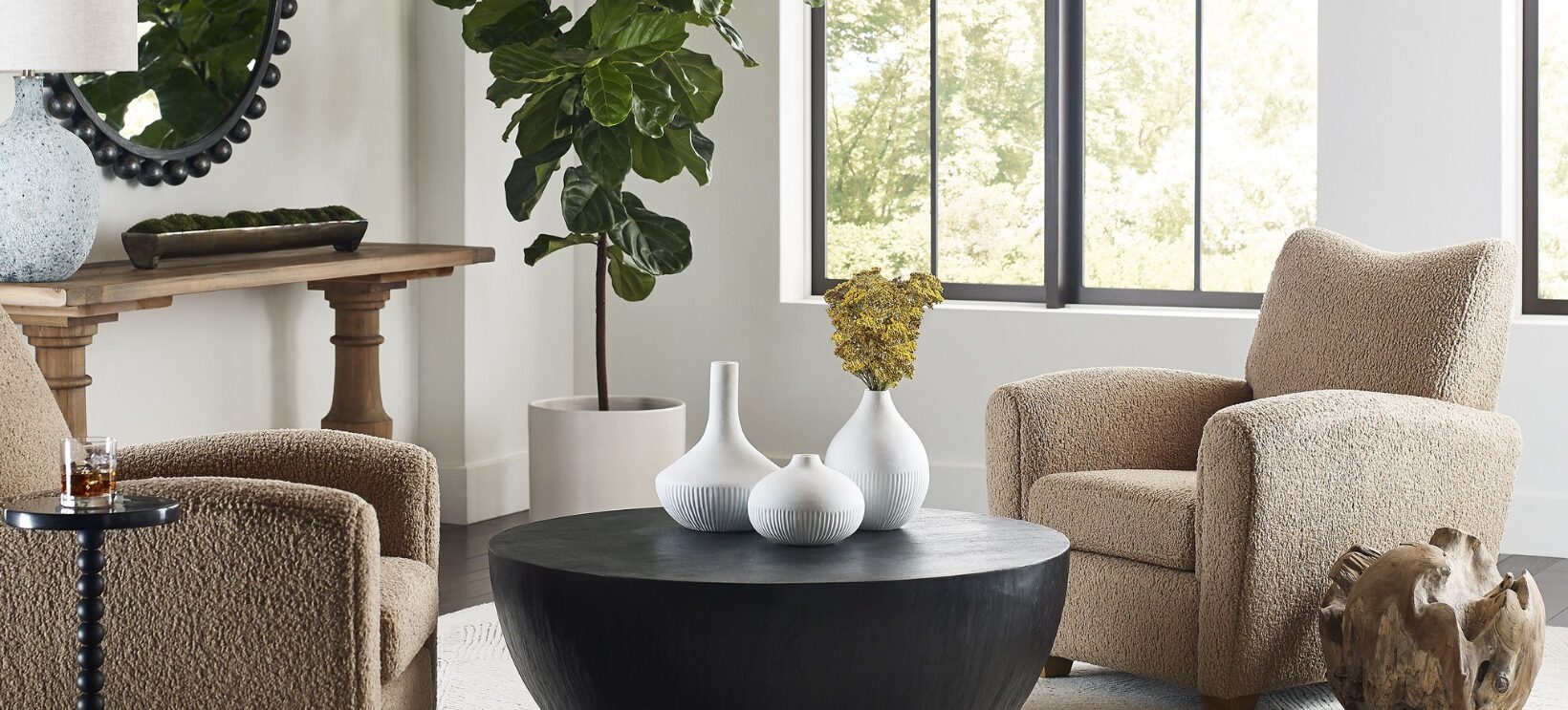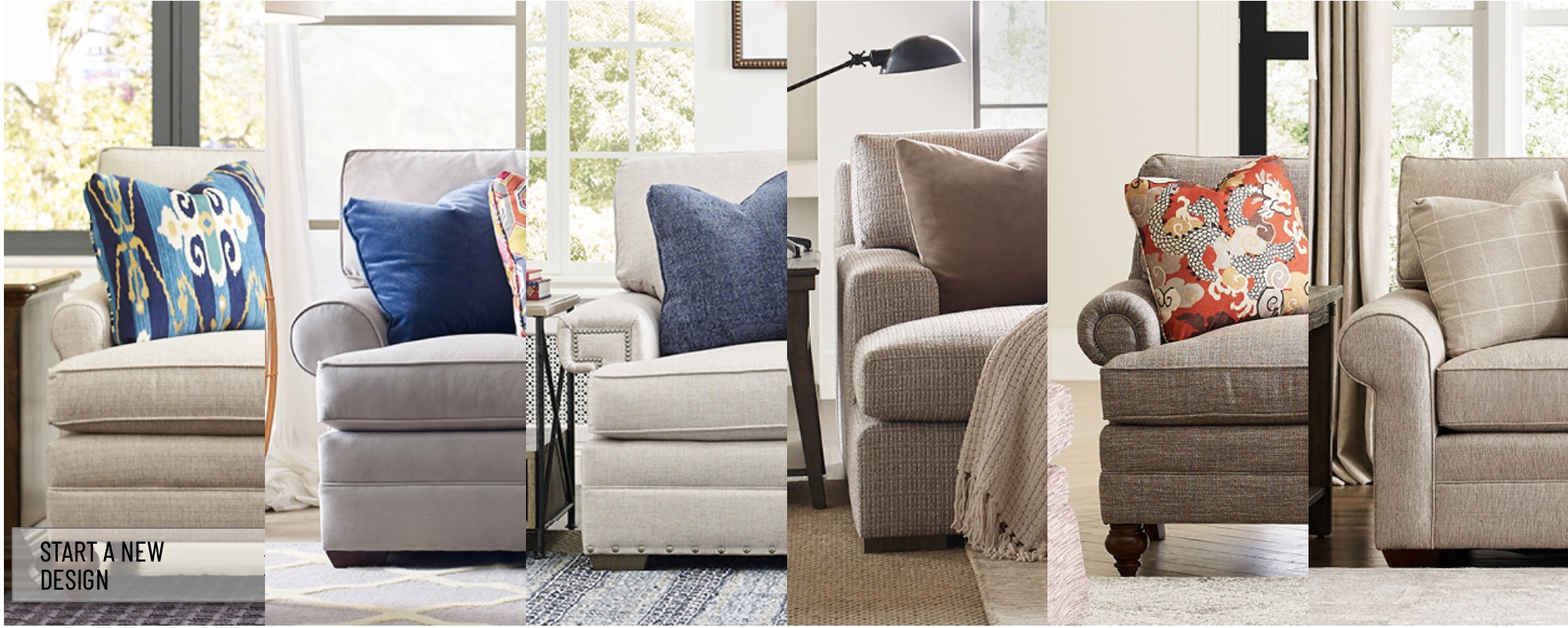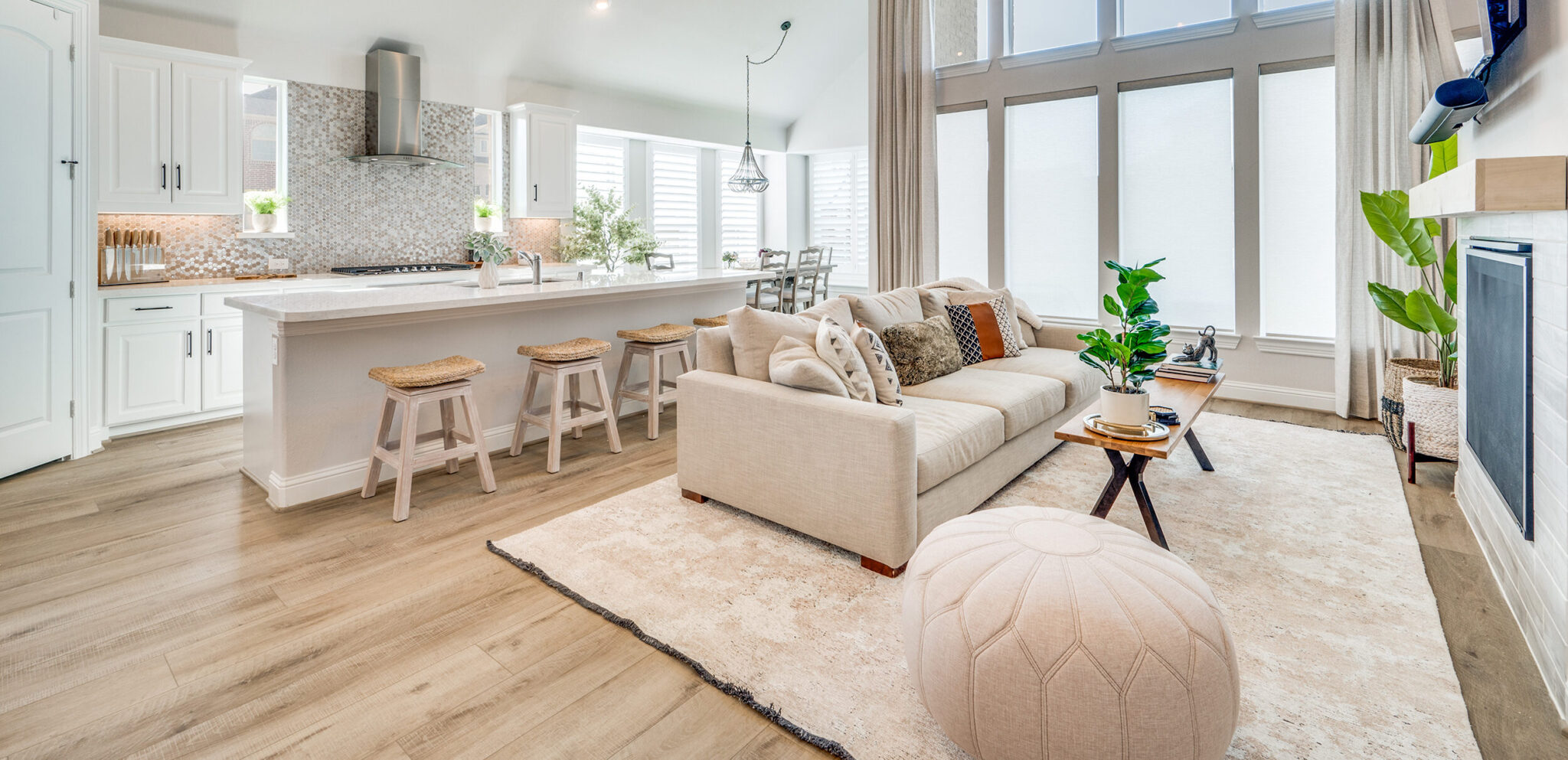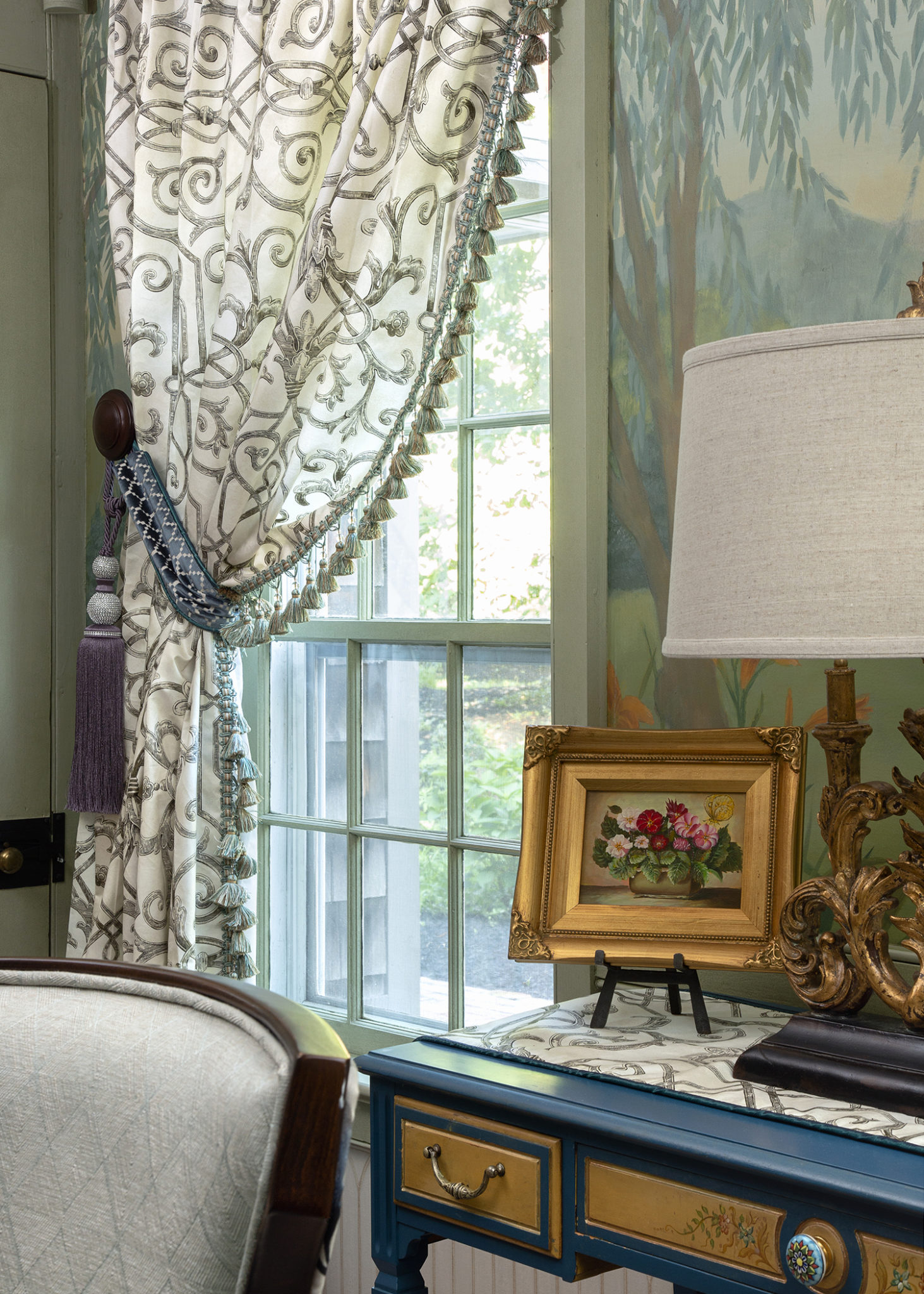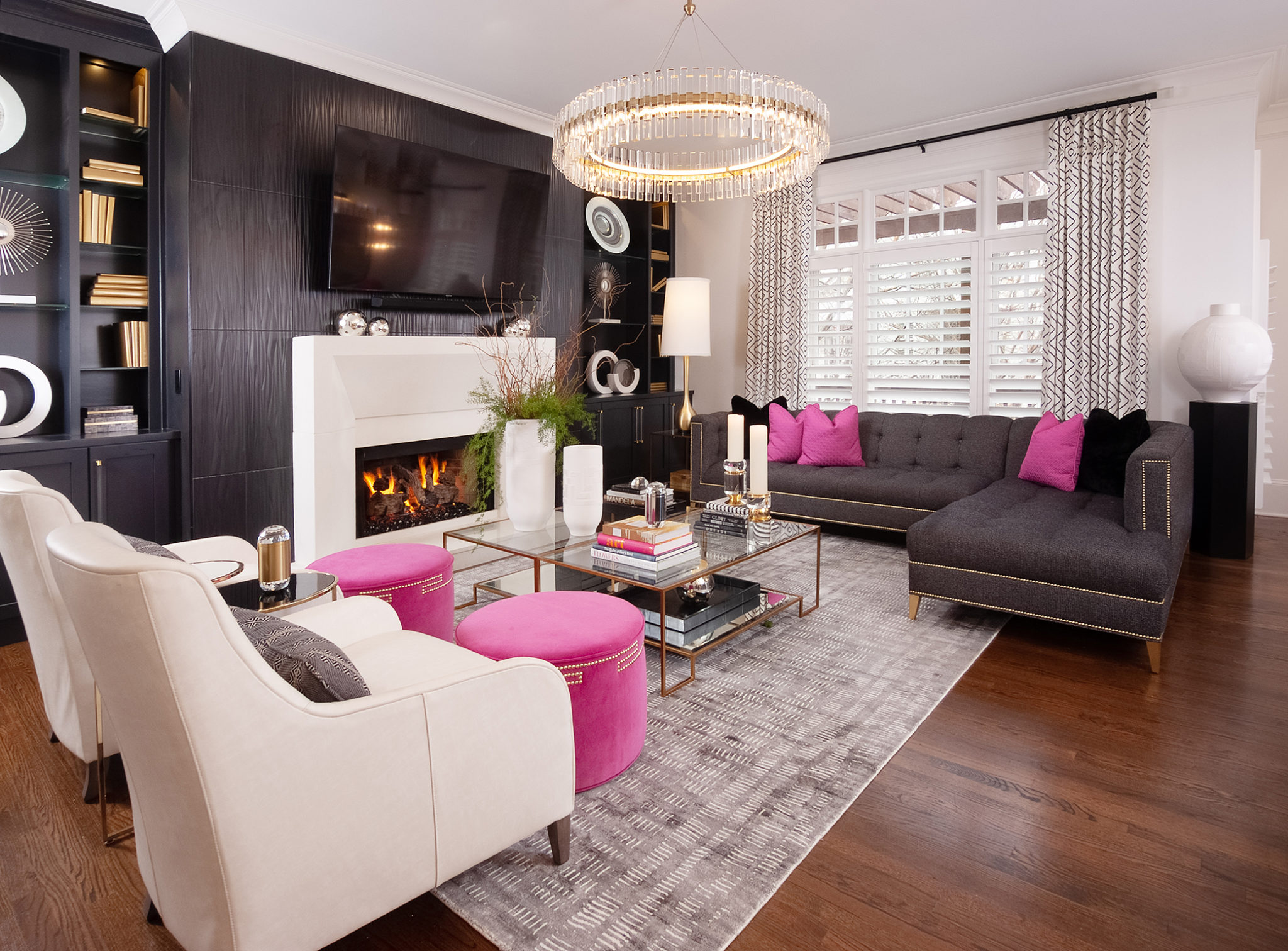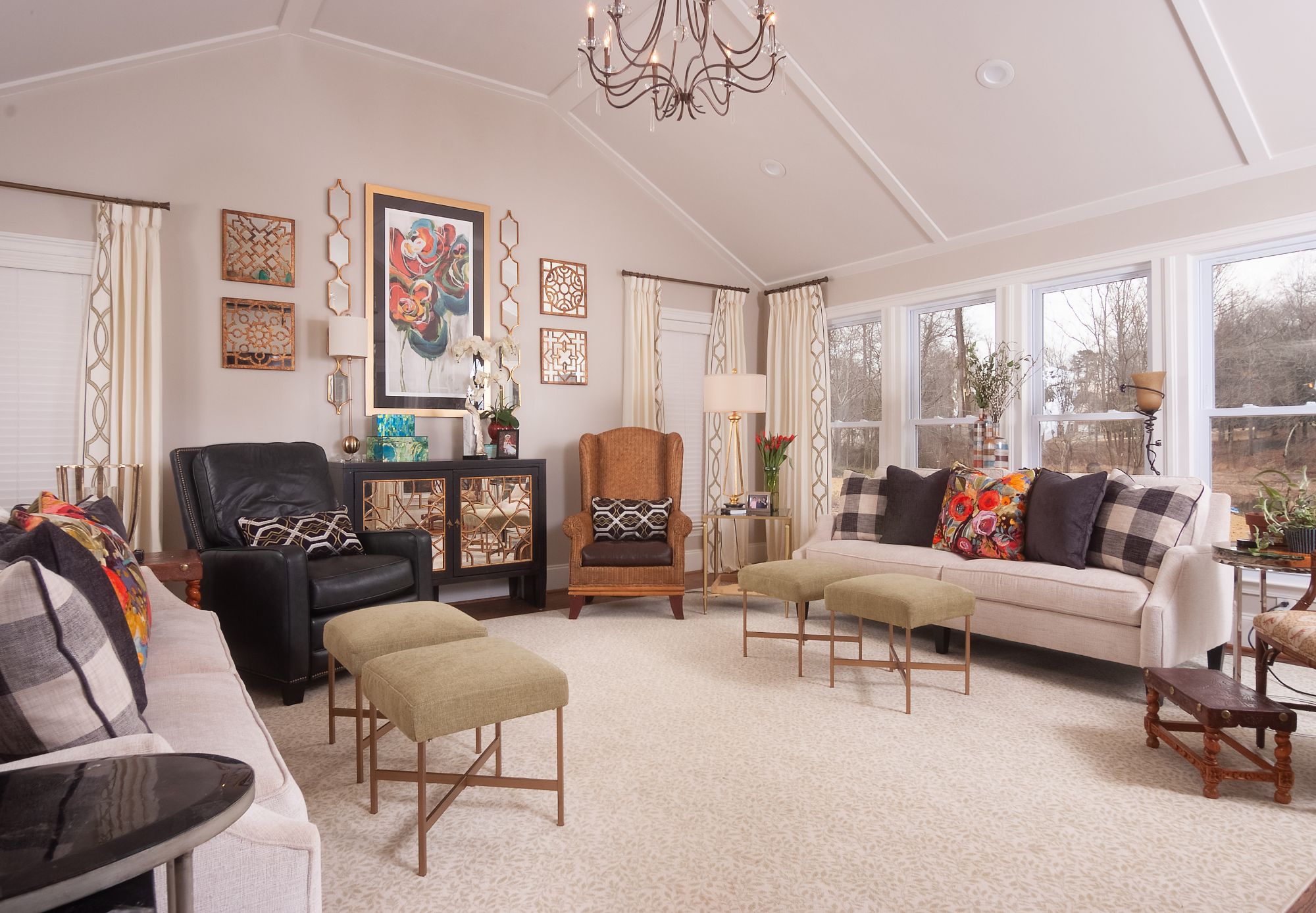Modern vintage — it seems like a contradiction. After all, how can something be modern and vintage? Surely those are two complete opposites? You’d be forgiven for thinking that, because you’re not entirely wrong! Modern vintage is an interior design style that skillfully blends antique and classic elements with contemporary features to create an aesthetic entirely its own.
It’s a great style to use when you want to showcase your personality without the restrictions of a design approach that has very strict “rules” for decorating. However, getting the right balance of old and new can be very tricky. That’s why we’re here to help! Keep reading to learn how to master this style.
The Fine Line Between Modern and Vintage
It might be useful to start by breaking down “modern vintage” into two parts, so let’s start with “modern.” Modern interior design is typically characterized by simplicity and general minimalism. You’ll see many neutral colors and monochromatic color palettes, sleek lines and curves, wide open spaces and plenty of natural light. There’s a focus on balance and symmetry, and you won’t find any gaudy or ornate decor and embellishments.
Now, we come to vintage, which is a tad harder to pin down. Essentially, in design, “vintage” just refers to a specific time period at least 20 years ago. This means that, technically, both the Art Deco style of the 1930s and the Boho approach that emerged in the 1970s are both vintage, although you’d likely mentally categorize them completely differently!
Modern vintage interior design is the artful incorporation of older pieces in a room that’s otherwise noticeably modern, or vice versa. People decorating in the modern vintage style typically take one of two routes: Either they use vintage decor to create a more antiquated appearance in a contemporary space, or they utilize modern decor in a vintage room to add a modern twist.
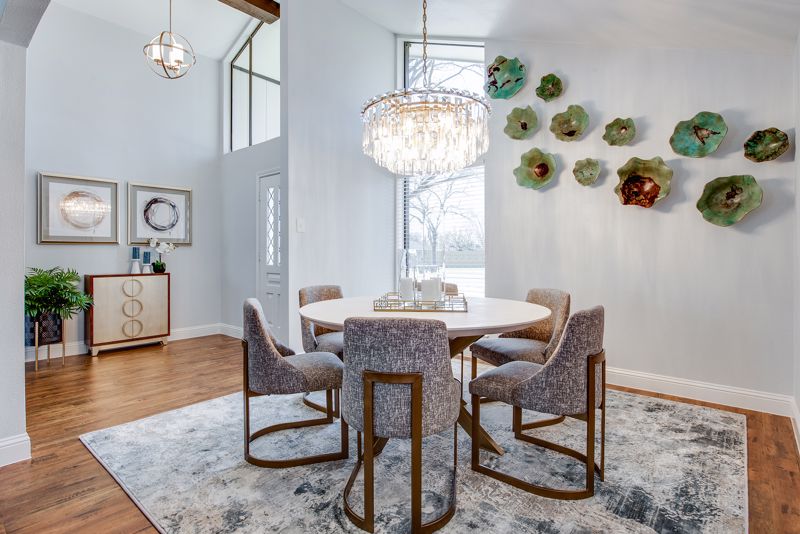
What does that look like in practice? Let’s look at the first approach. For instance, you might see a living room styled in chic black, white and gray colors, containing a steel and glass coffee table with a vintage rug under it and an antique crystal vase on top of it. In the second example, you could expect to see a Victorian room with rich, velvet drapery, lit by a geometric metal chandelier. Modern vintage is all about balancing the past and present to create a subtle harmony.
Where Antiques Come Into the Picture
We’ve mentioned antiques a few times now, and it’s worth noting that “antique” and “vintage” are two very different things. As we said, “vintage” can be used to refer to anything that’s at least 20 years old, although some people will bump up this number to 40, so, there’s a lot of wiggle room when it comes to dating pieces that can be classified as vintage.
By contrast, something can be called “antique” only when it’s at least 100 years old. That’s quite the difference! And, importantly, that’s true for all furniture and home decor, whether it’s linen, a bed frame or glassware. Let’s use an example to put that into perspective: A Kit-Kat clock would be considered vintage because it was first manufactured in 1932, but it wouldn’t be an antique.
However, a chair designed by Thomas Hope in the 18th or 19th century would be categorized as antique and vintage because it’s older than 20, 40 and 100 years. What, then, do antiques include? The answer might be a bit frustrating: anything and everything. There are no set criteria to define an antique piece, other than its age, of course. That means that both a velvet and gold leaf chaise lounge and an outdoor ceramic flower pot can both be antiques if they’re over 100 years old.
Luckily for fans of modern vintage design, this actually might make their lives easier! It’s a lot easier to source an antique jewelry box your grandmother left behind than an original Rembrandt oil painting. You might already have a bonafide antique in your home and not even know it!
Selecting the Right Colors, Textures and Patterns
Because modern vintage interior design is inherently eclectic, there aren’t any hard and fast rules when it comes to choosing your shades, fabrics and prints. That said, there are still a few guidelines you can follow for the best results:
Color Palette
It’s worth settling on a visual scheme consisting of only two or three base colors. Limiting the number of colors you use is a good idea as the space will already likely be quite “busy” when you’re done decorating. Neutral colors are your friends here because they lend a modern feel, allowing your furniture and decor to steal the spotlight. Beige, black, gray and white all work well. If you want to use a bolder color, opt for a dark shade like navy blue, emerald green or maroon.

Materials
Modern vintage design gives you the freedom to layer textures and fabrics to create depth and dimension. Nothing is off limits: You can lay an antique animal hide rug or Persian carpet under chrome bar stools, or you might drape a light cotton blanket over a vintage velvet couch and set it on linoleum flooring. The most important thing when selecting your materials is to ensure there’s enough contrast between them to balance richness and sparsity.
Prints
If you have lots of modern, simple pieces, you can consider using old-fashioned (in the good way!) floral patterns for pillows, blankets or even wallpaper. Should you possess more than a handful of vintage or antique furniture, play with a contemporary geometric print for the floors or walls (provided your furnishings aren’t already patterned). Be careful not to overdo prints, though: Treat them the same as your color scheme, and use them only as accents so as not to overshadow your furniture and decor.
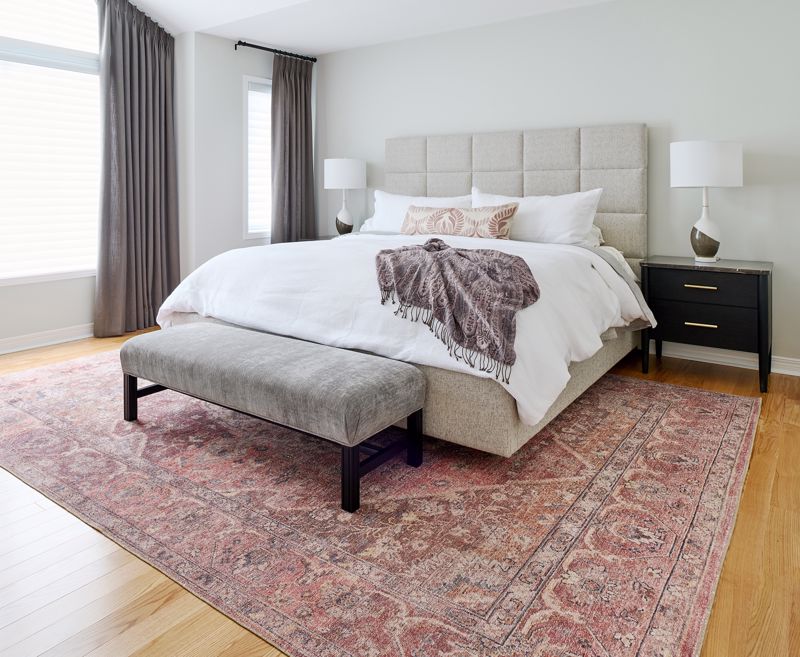
Creating Modern Vintage Rooms
As with many other design styles, you should select one or two statement pieces to use in the room and decorate around them. Let’s see how that would look in a living room, bedroom or bathroom:
Modern Vintage Living
Start by selecting a couch or coffee table that you want to use as your main focal point, and contrast it with other pieces of furniture and decor in the opposite style. For example, if you opt for a modern curved cream couch, pair it with a vintage shag carpet or an antique wooden table. Should you want to use an older sofa, consider placing it on a more contemporary geometric pattern rug next to a modern metal standing lamp. Oversized pendant lighting or a chandelier will make an excellent choice for illuminating the lounge.
Doing Modern Vintage in Your Sleep
Needless to say, the bed will likely be the star attraction in your bedroom. You can select a modern bronze four-poster bed frame and contrast it with an antique chest of drawers in a light yellow or warm wood (this works particularly well in homes with pressed ceilings). Or, perhaps you want an ornate vintage headboard, which pairs well with a simple dressing table made from dark or black wood. Go easy on the linen patterns, though, as you’ll want your furniture and decor to take center stage.
Soak Up Modern Vintage
Most bathrooms might already have baths and showers pre-installed, in which case you’ll work mostly with faucet and showerhead fixtures. If the bathroom is already quite modern, copper bathroom fittings add a touch of old-world grace and elegance. Should you be at liberty to decorate a bathroom from the ground up, consider installing a freestanding clawfoot tub and contrast it with sleek chrome fittings at the washbasin(s). You can’t go wrong with black tiling in a bathroom, as it dances the fine line between antique and contemporary.
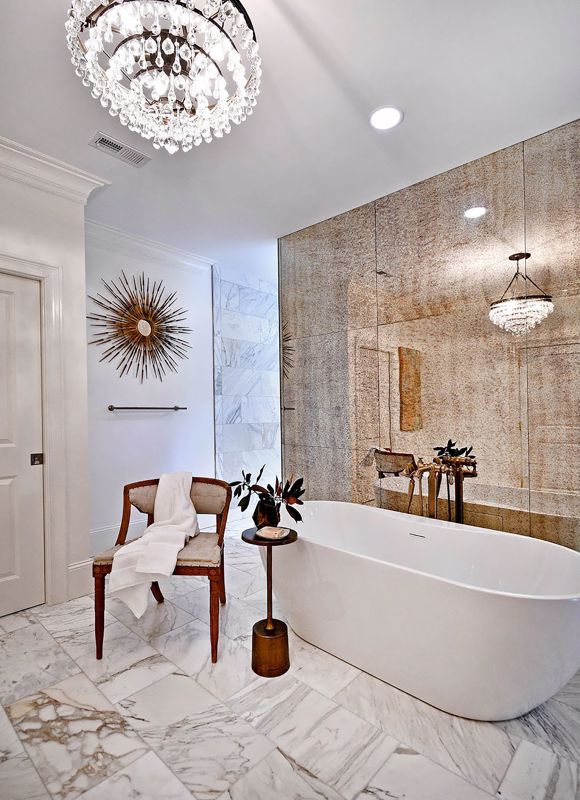
Getting the perfect balance of modern and vintage (or antique) can be a tall order for many people, and understandably so! ABCA Design can help turn your ideas into reality. Contact us today to schedule your complimentary consultation.

